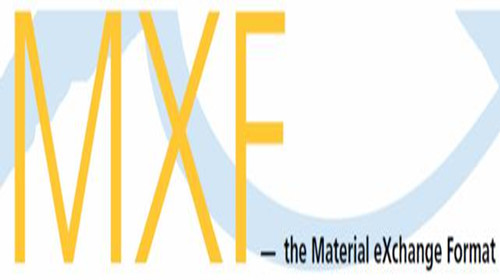MXF is a versatile file format which can perform a number of tasks.
It can:
- store simple completed works with metadata (tape replacement)
- store files in a streamable format which allows viewing while transferring
- wrap up a playlist of files and store the synchronization information
- wrap any compression format
- store cuts-only EDLs and the material they act on.

To understand more, it is important to appreciate the difference between streaming and file transfers. Traditionally, broadcast television has been built around streaming video and audio. This is logical as the original scene action and the viewer expectation is of continuous real-time video and audio – supported by continuous streaming. PAL and NTSC analogue composite video, SDI and SDTI all stream. But computer systems exchange data by means of file transfers.
Streaming media:
- is viewable during transfer – before all the data is delivered
- offers minimum delay for live action
- is point-to-point with no bottlenecks – it offers reliable, continuous operation.
Networked media:
- uses low-priced, standard IT components
- may be stored on a wide variety of devices including disks and tape
- offers flexible data exchange, sharing and distribution.
Both real-time streaming and file transfer have their advantages and both will continue in use. Therefore, it is essential that both have some degree of compatibility so they can co-exist and allow material exchange between them. With this in mind, the design of MXF makes it a file format that can stream
– creating a seamless bridge between the two transfer types. Operationally, there is no effort involved beyond requesting the transfer. So, for example, advantage can be taken of the flexibility of AAF in postproduction. Then, by using an"invisible" simple file conversion, MXF can be used for the finished playout to the tape streamer or server storage. Note that the file conversion is lossless for video and audio, if the compression scheme is not changed.
In a similar way, operational and creative staff want to concentrate on their tasks and not bother with compression issues. But is it also true that no single compression format will suit all applications, and various schemes will continue to be used. Therefore MXF is compression-independent, offering the same service regardless of the compression in use. This allows manufacturers to provide equipment with multiple compression codecs, which could lead to seamless working between – for example, MPEG and DV-based systems.
Recommended software
1. Pavtube MXF Converter for Windows – convert Canon XF and Panasonic P2 cameras' MXF shootings to video editing software compatible file formats.
2. Pavtube MXF Converter for Mac – transcode MXF files to Apple ProRes 422/4444, DVCPRO, Avid DNxHD, AIC for using in FCP, Avid Media Composer, iMovie, and Final Cut Express.
Useful Tips
- How to Convert MXF to ProRes, AIC MOV for Loading into FCP and iMovie?
- Transfer Canon C300 MXF to FCP/Quicktime for editing on Mac
- Canon MXF file to iMovie importing issues on Mac
- How to Transcode MXF to AVI Easily and without Quality Drop ?
- Convert Panasonic P2 footage for importing to Davinci Resolve
- Fail to Import MXF Files into Premiere Pro CC 2015, Solved!


 Home
Home Free Trial MXF Converter for Mac
Free Trial MXF Converter for Mac





